Last updated: November 22, 2023
Thing to Do
Saddle Rock Trail Geology Hiking Tour
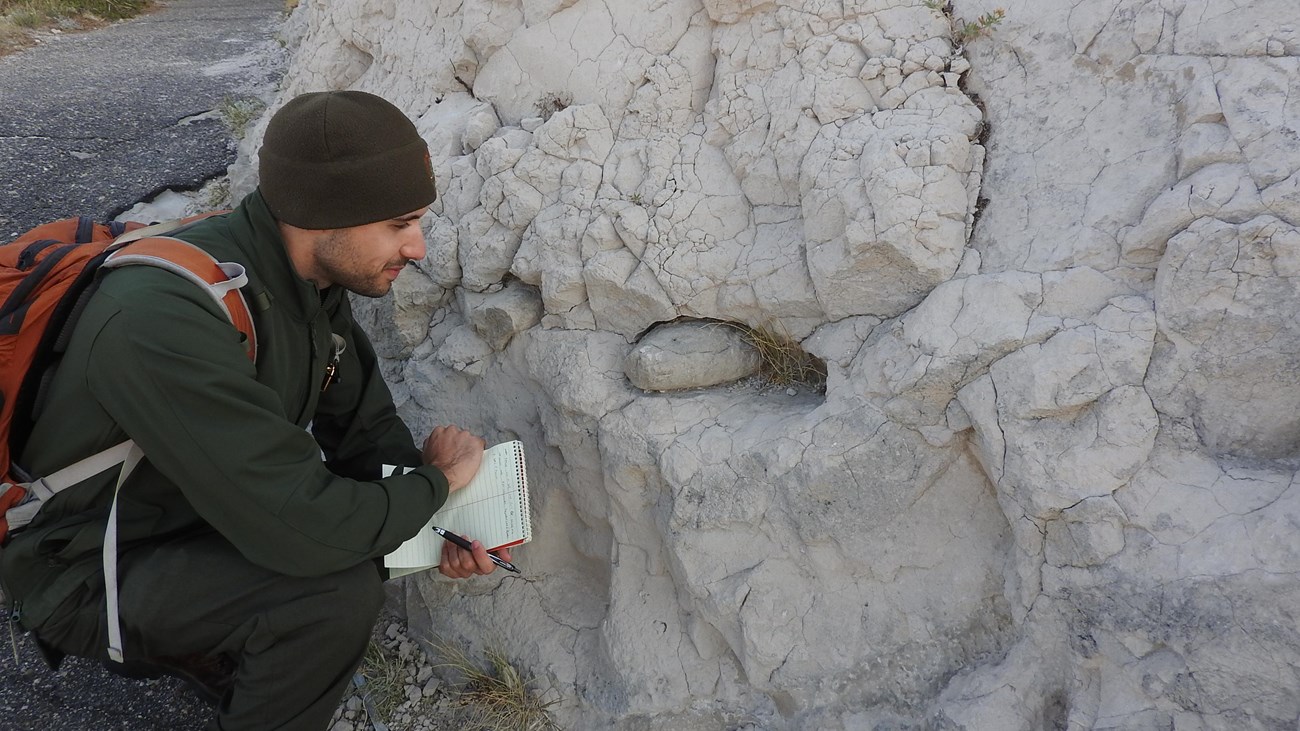
NPS/Eric Grunwald
Participants may also start their tour at the Lower Saddle Rock Trailhead and hike up and down the trail for a 3.2 mile round-trip hike. Another option is to take the Summit Shuttle to the Summit of Scotts Bluff when it is available.
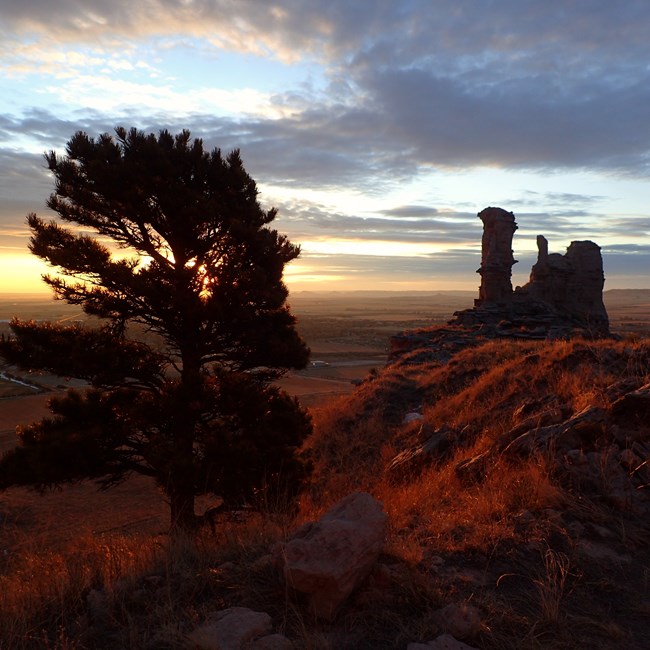
NPS/Eric Grunwald
This is a 1.6 mile (one-way) hike along the Saddle Rock Trail. The self-guided tour is set up to begin at the summit of Scotts Bluff. However, you can also begin at the lower trailhead which is located just east of the visitor center. There is an elevation change of 435 feet on this trail and no water is available along the trail. To get to the first stop, drive to the summit of Scotts Bluff and take the North Overlook Trail to the northmost overlook. There you will see a view that reaches across the North Platte River Valley.
-
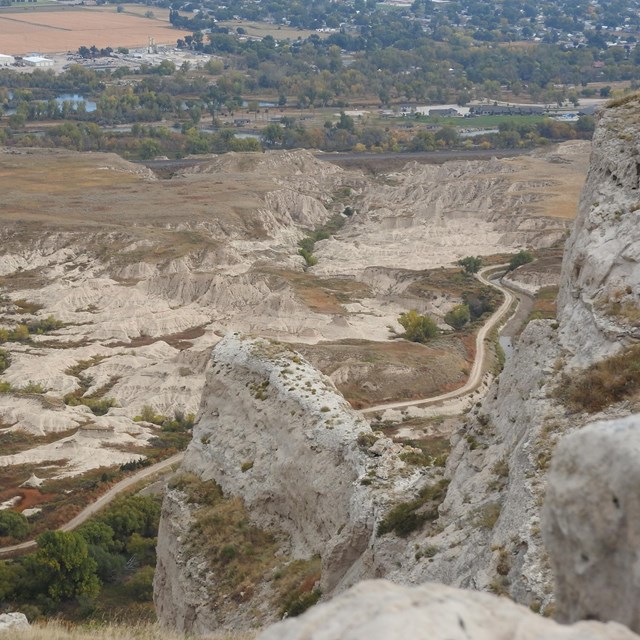 Stop 1: Orella Badlands from Overlook
Stop 1: Orella Badlands from OverlookThe northernmost end of the North Overlook Trail offers a wonderful view of the Orella Badlands and North Platte River below.
-
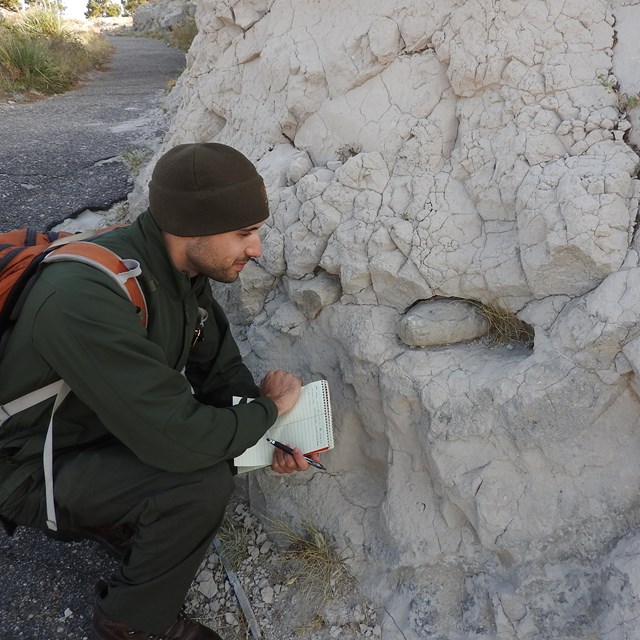 Stop 2: "Pipy" Concretions
Stop 2: "Pipy" ConcretionsPipy concretions of limestone act like a caprock and protect the layers of softer rock below them,
-
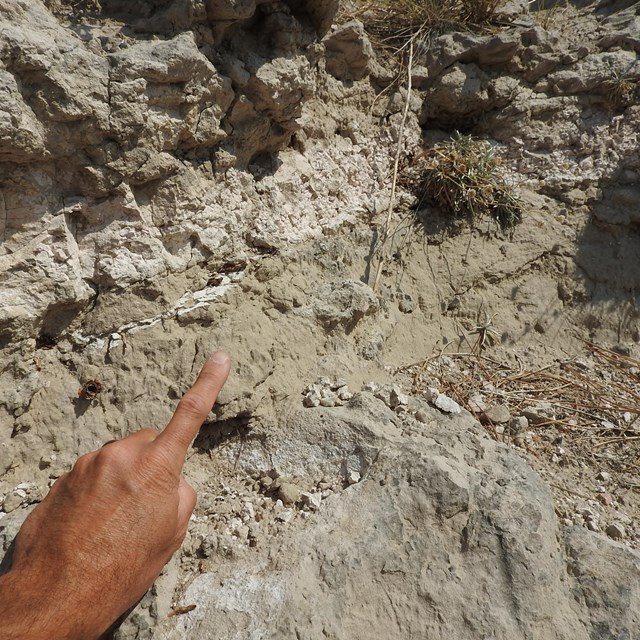 Stop 3: Ash Lens
Stop 3: Ash LensAn ash lentil or lens is body of ash that is thick in the middle and thin at the edges, resembling a convex lens in cross-section.
-
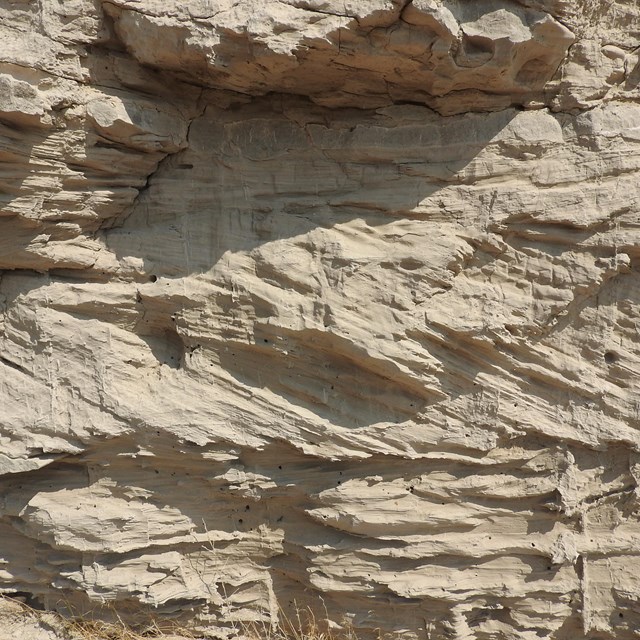 Stop 4: Cross-stratified sand
Stop 4: Cross-stratified sandThe sandstone along this cliff face is cross-stratified or cross-bedded.
-
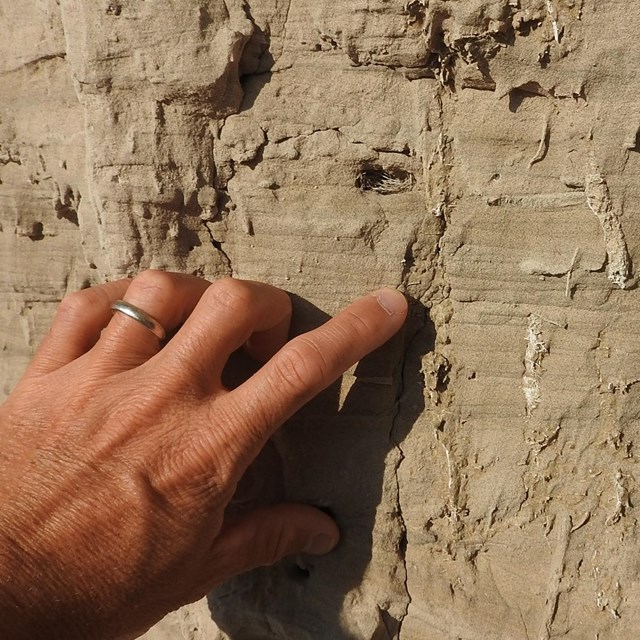 Stop 5: Invertebrate Burrows
Stop 5: Invertebrate BurrowsExcellent samples of a number of different types of invertebrate burrows are present in the ash and in adjacent sandstones.
-
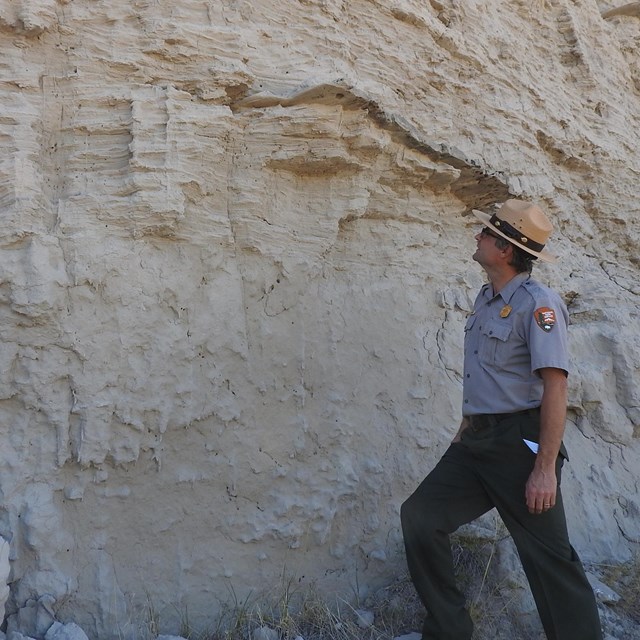 Stop 6: Massive Sandstone
Stop 6: Massive SandstoneSandstone in this location is massive, meaning it lacks obvious layering.
-
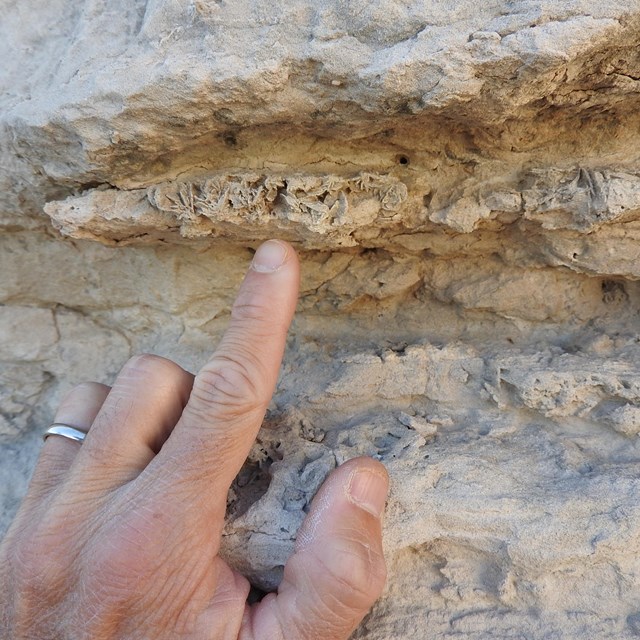 Stop 7: Calcite Sand Crystals
Stop 7: Calcite Sand CrystalsSand crystals were formed through calcite replacement of gypsum.
-
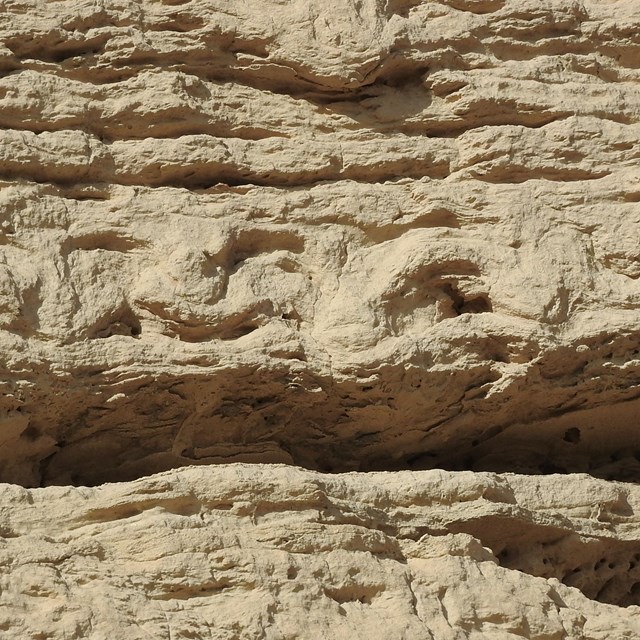 Stop 8: Vertebrate Tracks
Stop 8: Vertebrate TracksConcave-up deformation structures that scientists interpret as vertebrate tracks are seen here.
-
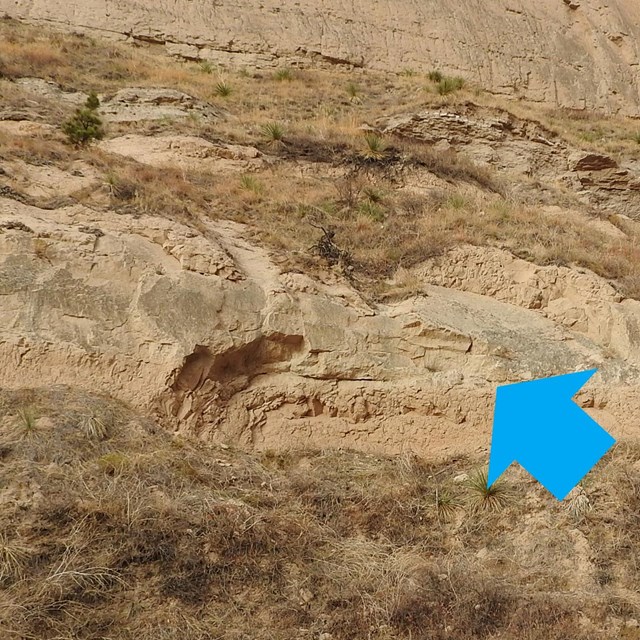 Stop 9: The Whitney-Gering Contact
Stop 9: The Whitney-Gering Contact30 feet above the trail, the Gering Formation ends and the Whitney Member of the Brule Formation begins.
-
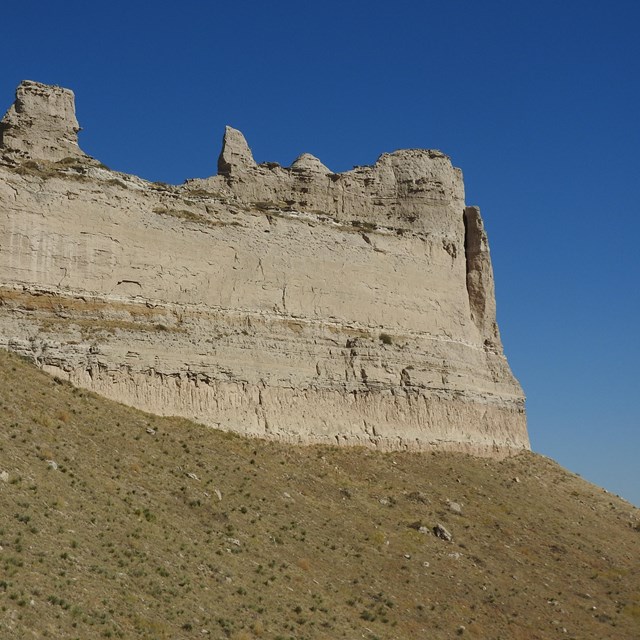 Stop 10: Rockfall
Stop 10: RockfallJust below Saddle Rock are the remains of a large rockfall that happened in 1974.
-
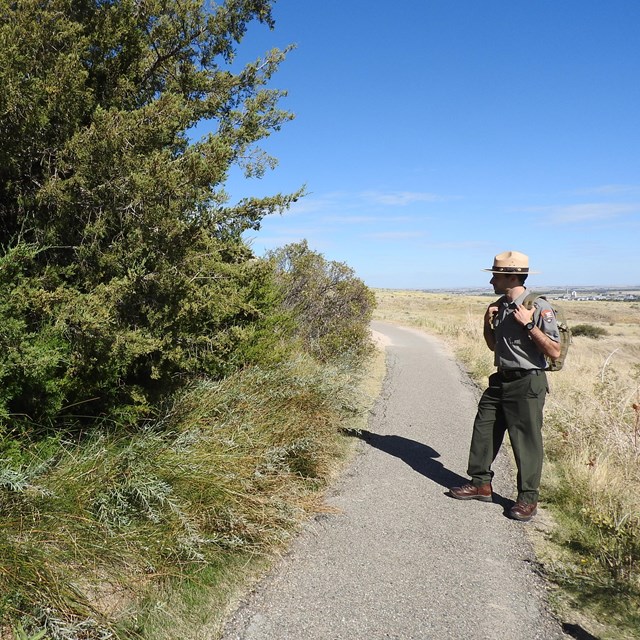 Stop 11: Scotts Spring
Stop 11: Scotts SpringScotts Spring is the only natural spring located in Scotts Bluff National Monument and issues from cracks within Whitney Member siltstones.
